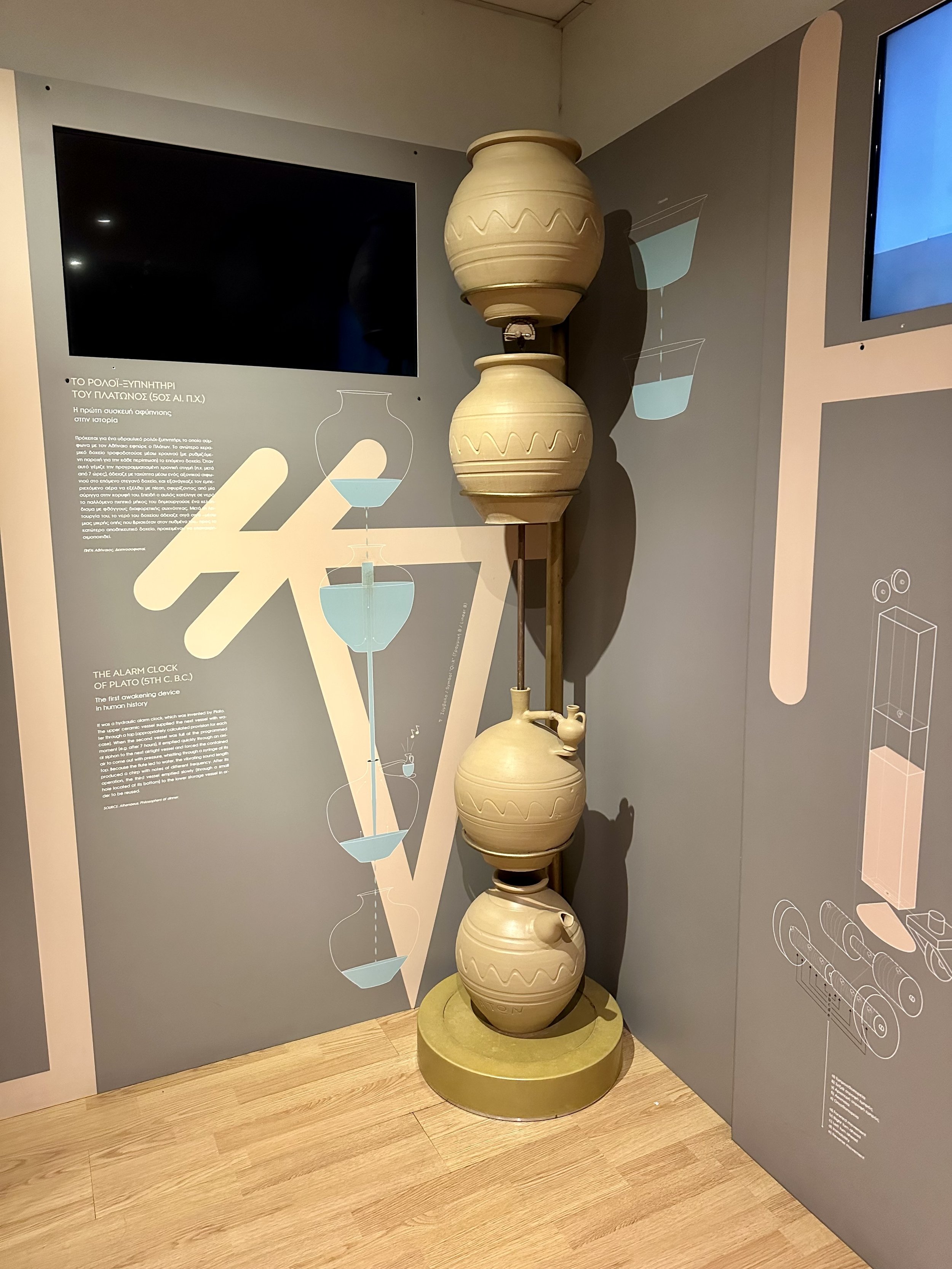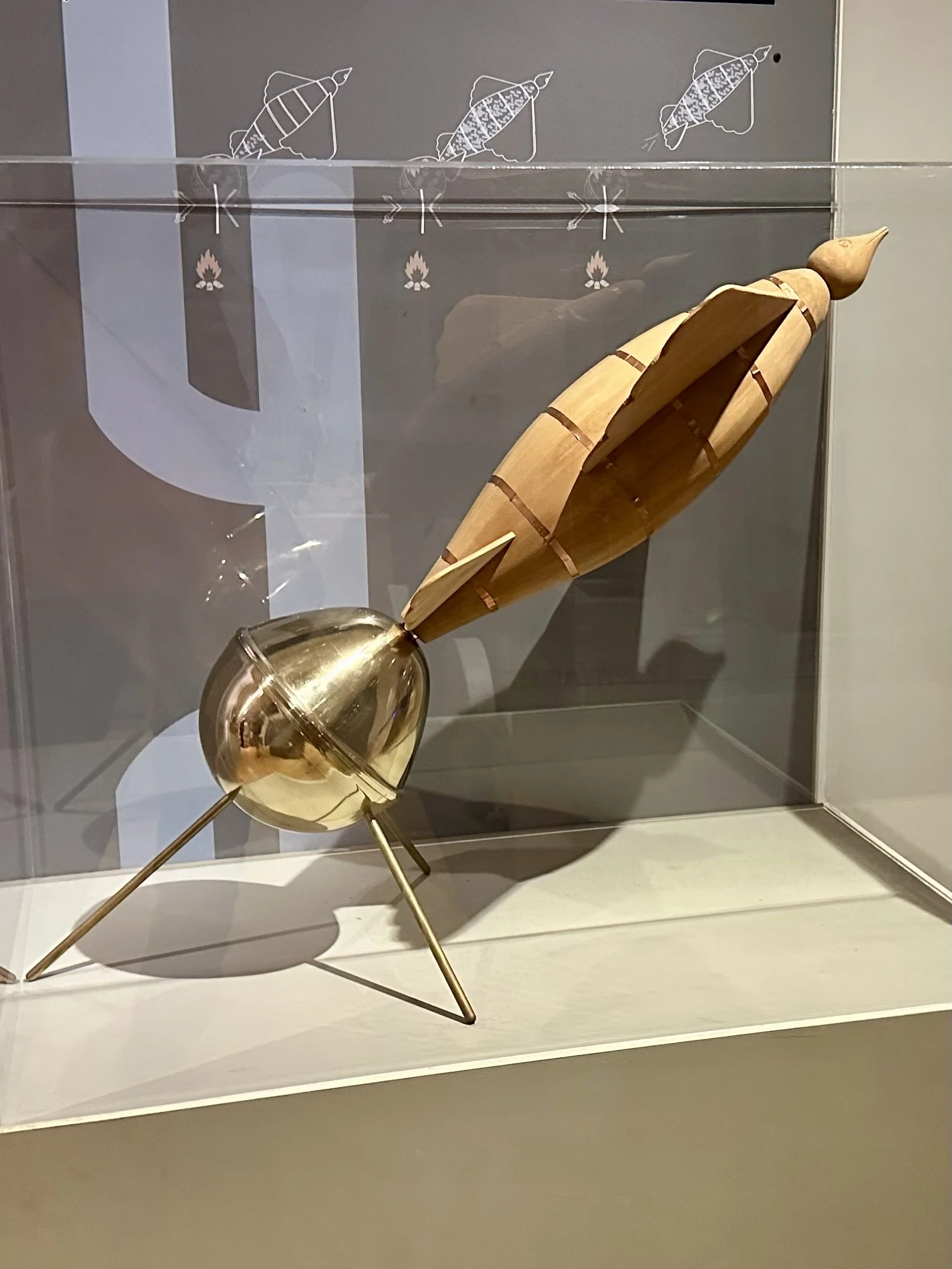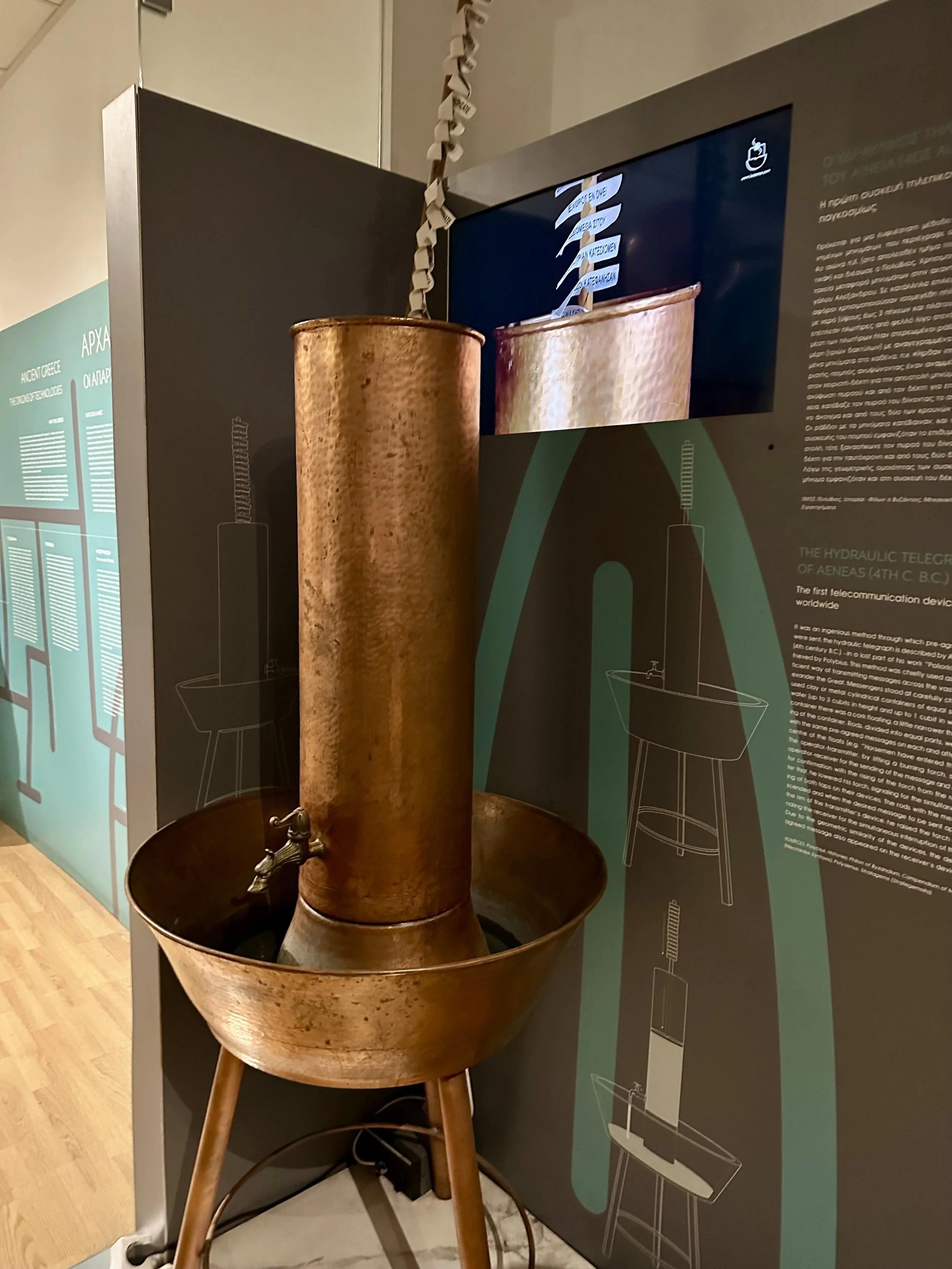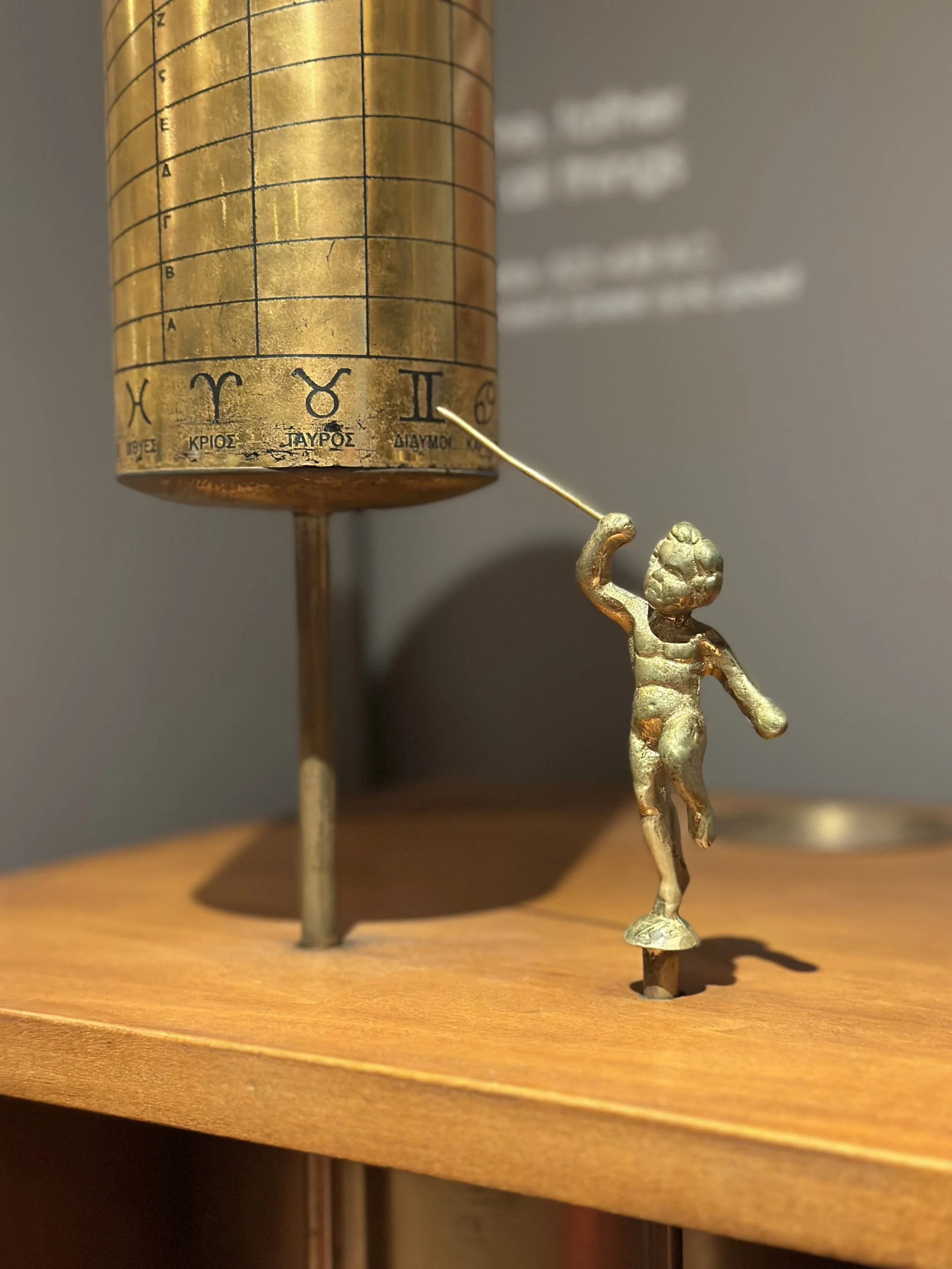Kotsanas Museum of Ancient Greek Technology
The ancient Greeks are universally revered for their philosophy, art, and math. What is less widely known is that they were also brilliant engineers and inventors. That was the focus of a small museum in Athens called the Kotsanas Museum of Ancient Greek Technology.
The museum’s creator, Konstantinos Kotsanas, constructed working models of ancient Greek inventions, based on his extensive study of history and archaeology. The models were a fun way for us to learn about Greek innovations in tools, hydraulics, jet propulsion, computing, telecommunications, automation, and more. Long before Leonardo da Vinci, there were polymath Greeks!
Here is a sample of the hundreds of inventions at the museum.
The First Alarm Clock
This was invented by Plato in the 5th century BCE. Water drained slowly from one ceramic jar into a second one. When the second jar was full, it emptied quickly into an airtight third vessel. The compressed air caused an attached flute to make a loud chirping noise.
Plato’s student Aristotle invented an alarm clock, too. His used falling metal balls instead of whistles. Both alarms would be a rude awakening!
The First Use of Jet Propulsion
Archytas built this autonomous flying machine in the 5th century BCE. A lightweight aerodynamic shell contained a large animal bladder. The opening of the bladder was attached to an airtight vessel of boiling water (or a powerful air pump). The pressure of the steam or compressed air launched the pigeon, which flew a distance of hundreds of meters.
The First Telegraph
This device from the 4th century BCE was used for sending messages across long distances. Cylindrical vessels were placed atop hills. Each vessel contained water and a cork float with pre-arranged messages attached along a rod. The sender lit a torch to alert the receiver on the next hill. When ready, both messengers opened their taps. As the water ran out, the floats descended. When the desired message reached the rim of the sender’s vessel, he signaled the receiver to close the tap. The second vessel would (in theory) have the same message at its rim.
An Automated 24-Hour Clock
This clever hydraulic clock from the 3rd century BCE could tell the time on every day of the year. Water from a spring filled the first container, and a special valve filled a second container to a precise level. Water then dripped steadily into a tall cylinder with a float. As the water level rose, the statuette floated upward and pointed to the hour on the marked drum. At the end of 24 hours, the water drained, the statuette dropped, and a gear system rotated the drum 1/365 of its circumference. The clock now indicated the time on the new day.
A Magic Wine Jug
This ingenious gadget was from the 3rd century BCE. It had two inner compartments and two spouts disguised as a single one. By covering one or both holes in the handle with a finger, the cupbearer could dispense water, wine, or a combination of both.
The First Vending Machine
This gadget from the 1st century CE sat outside a temple. When a coin was dropped into the top, it fell onto a balance. The other side of the balance lifted, opening a valve that dispensed a fixed amount of holy water.





